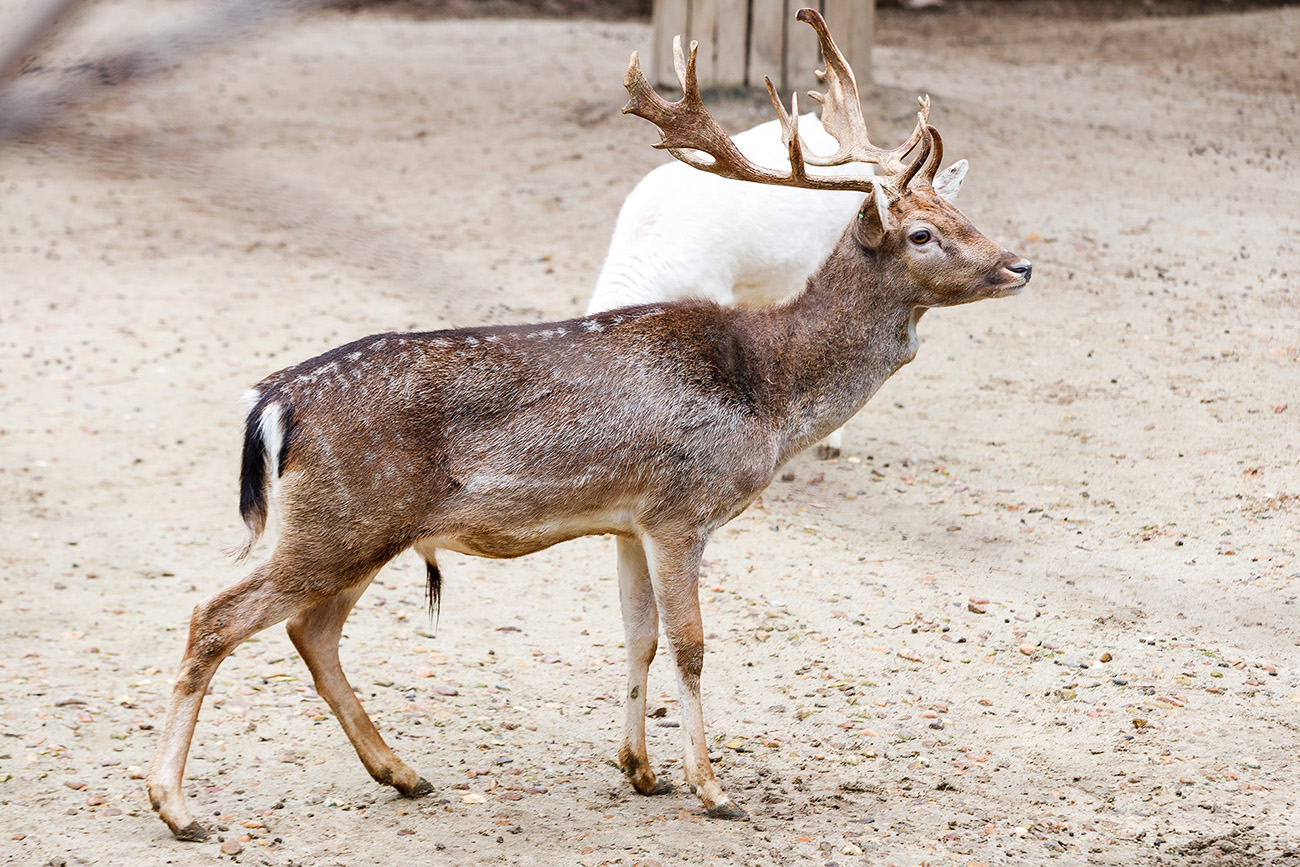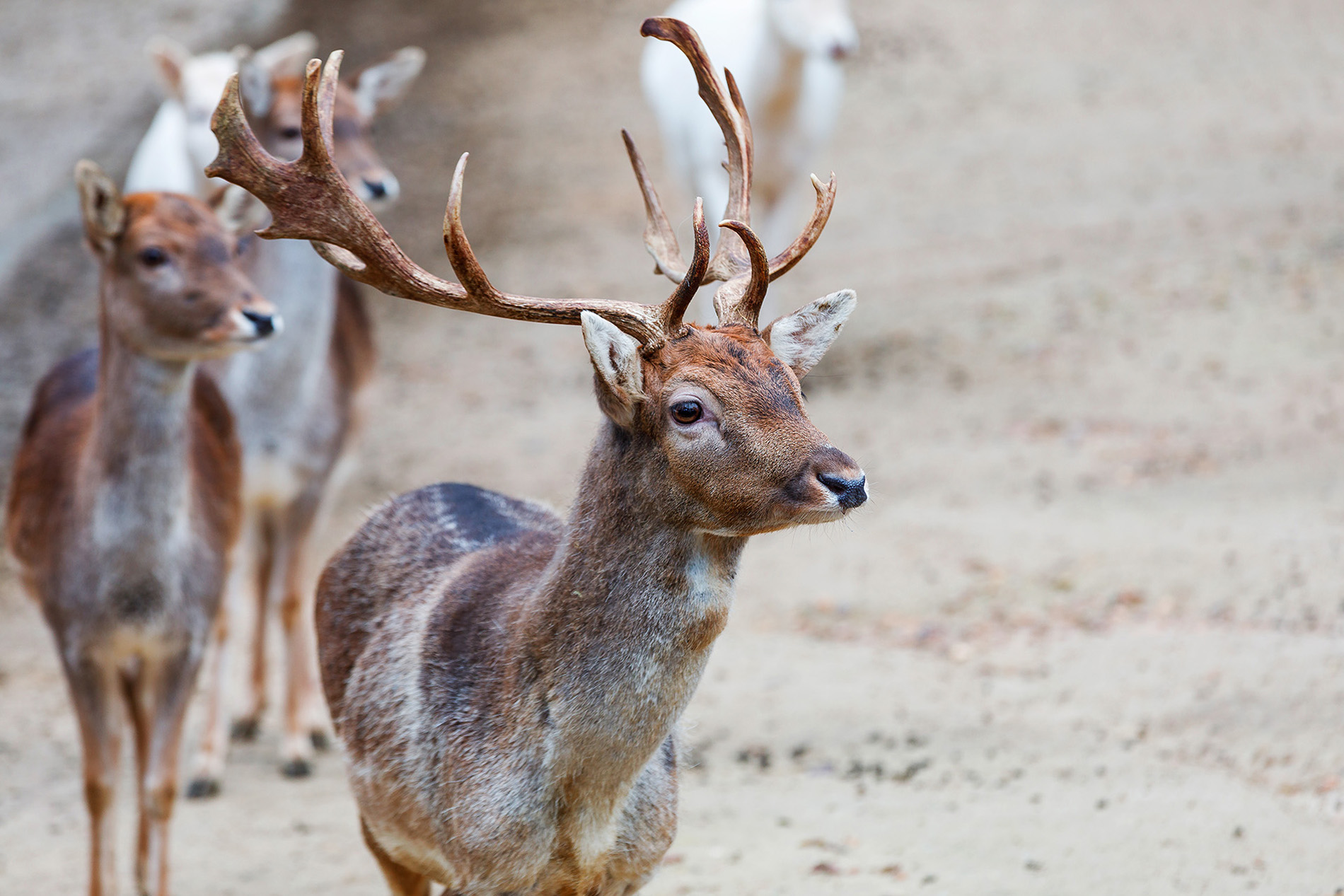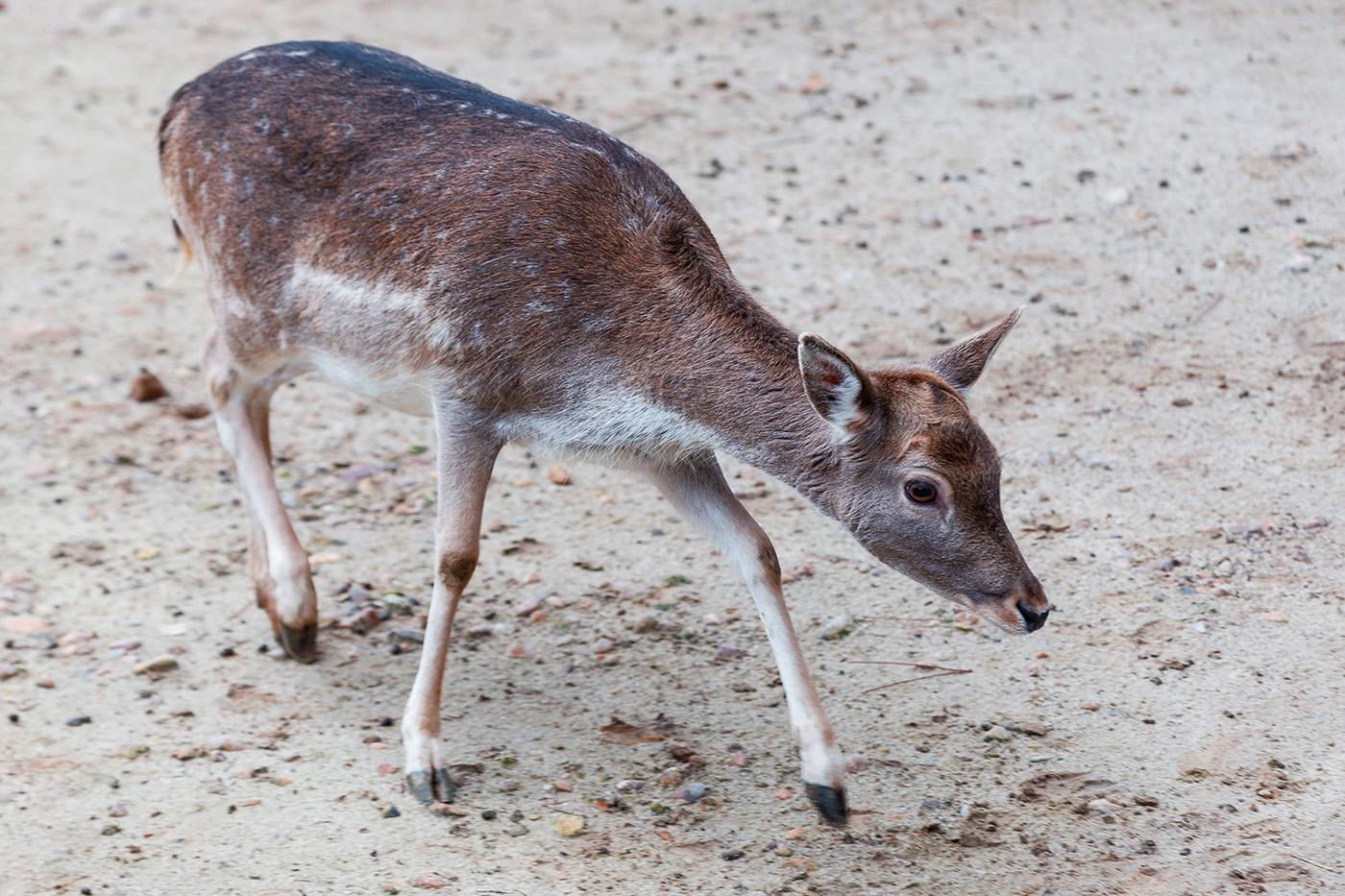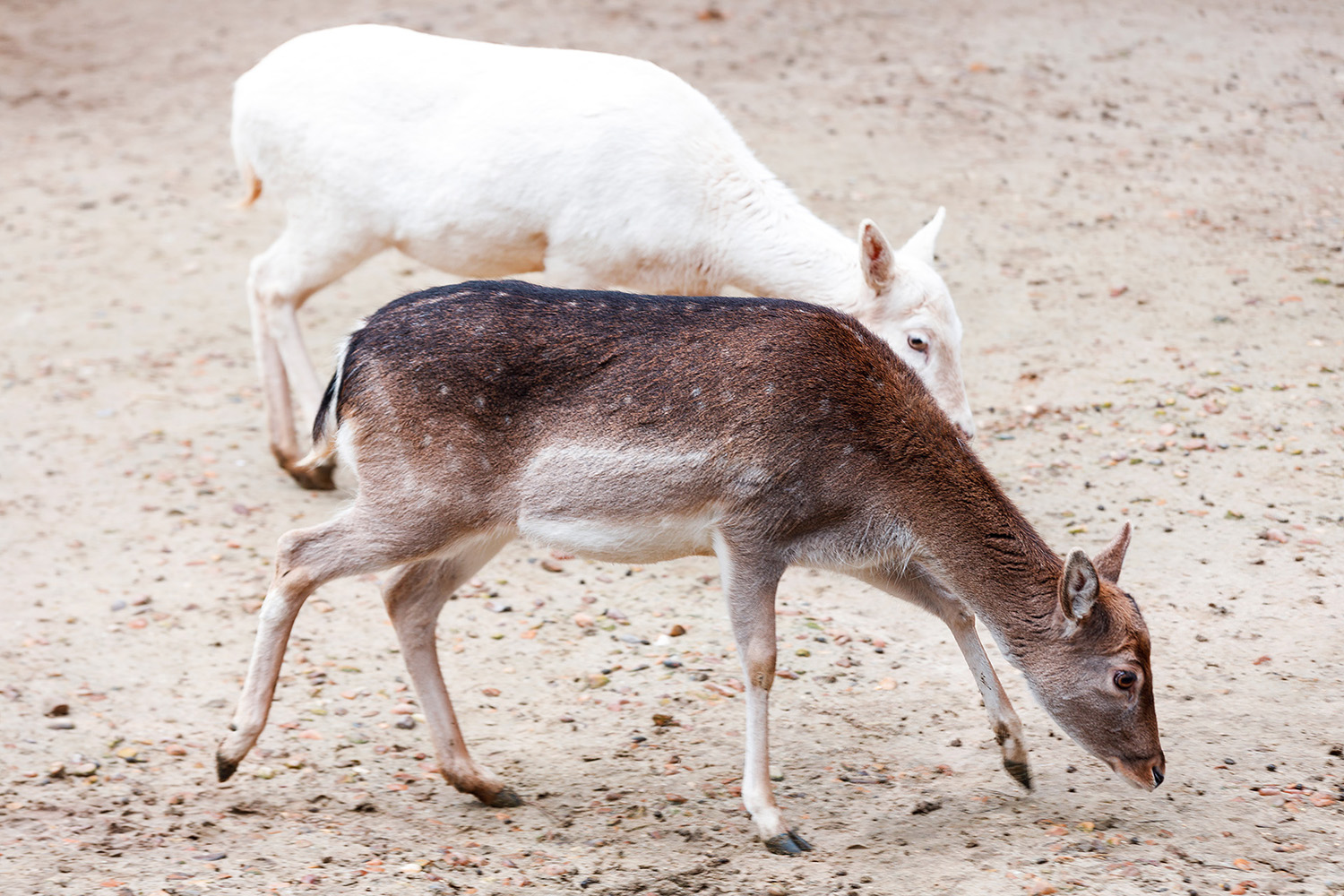This small cervid has spread throughout Europe since the end of the last glaciation. In Spain it was introduced in ancient times and currently occupies many areas managed for hunting purposes.
It exhibits two different coats for summer and winter. The summer color is slightly reddish, speckled with white spots. In winter the coloration becomes darker and the white spots disappear.
It feeds almost exclusively on herbaceous vegetation.
Only males have antlers, whose flattened shape is unique among the other species of the family. This antlers are shed every year at the end of winter and grow back in spring, covered with a kind of velvet called fuzz, which is then lost.
Fallow deer do not form herds but live in family groups of no more than 10 individuals, or else lead a solitary life.
The fallow deer is a polygamous species. The mating season takes place at the beginning of autumn, just after the deer season is over. Adult males mark their territory and compete with other males for dominance and the right to cover the females. After 8 months of gestation, females give birth to a single calf in spring, which remains hidden for a few days and is periodically visited by its mother.
The great predator of the fallow deer must have been the wolf, but nowadays, only the Iberian lynx is capable of occasionally hunting cubs and females.

















.jpg.transform/rendition-sm/image.jpg)





